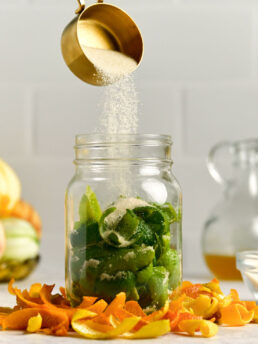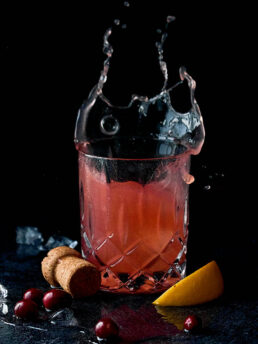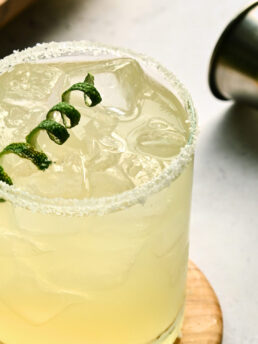The Perfect Lemon Drop Martini Uses Oleo-Saccharum
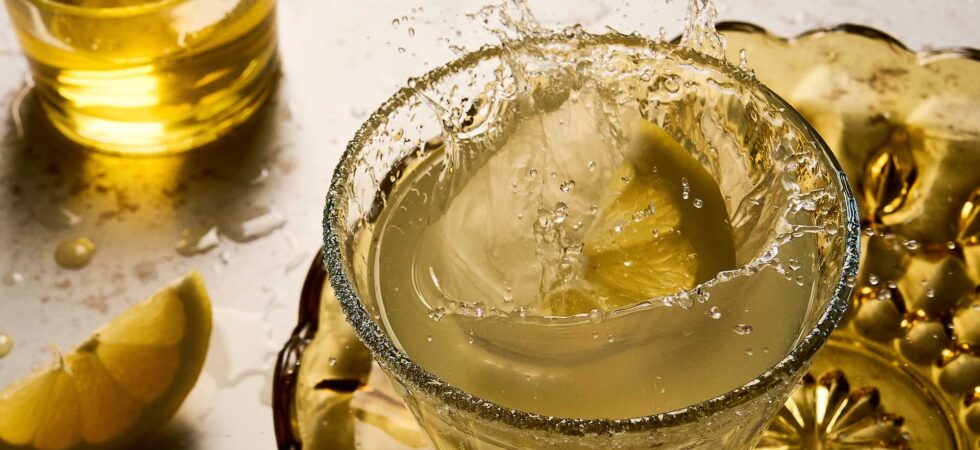
I love a refreshing Lemon Drop Martini. It takes me back to my college days, when bitter and earthy cocktails hadn’t yet hit my palette and I could have as much sugar as I wanted without a hangover. I’ve moved on from those times and have hit what I consider to be my golden age of craft cocktails. And, this lemon drop martini is a perfect example of that crafting. Lemon oleo-saccharum, gives the standard lemon drop martini a huge punch of lemon flavor from the oils in the peels. It’s light and effervescent in a way that fruited simple syrup wishes it could be. If only all cocktails were this good!
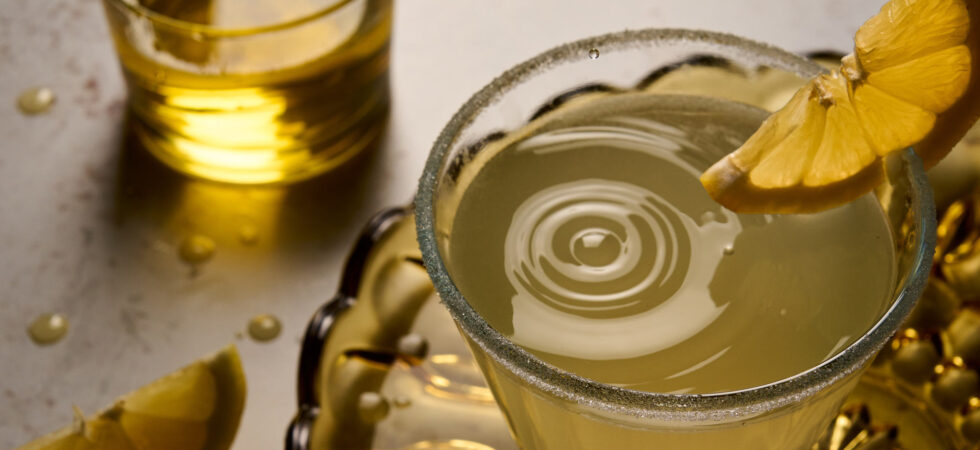
Get the Recipe: Lemon Drop Martini
Ingredients
Lemon Oleo-Saccharum Ingredients
- 1 cup lemon peels, (about 6 lemons)
- ¼ cup granulated sugar, (see FAQs to make superfine sugar for better dissolving)
Cocktail Ingredients
- 2 oz vodka
- 1 oz lemon juice, fresh squeezed
- ¾ oz lemon oleo saccharum
- ¼ cup granulated sugar , (optional garnish)
- 1 teaspoon agave , (optional garnish)
Equipment
- vegetable peeler (Y-peeler preferred)
- kitchen scale (optional, but reccomended)
- non-reactive bowl or jar
- measuring Cups
- Fine Mesh Strainer
- vacuum sealer (optional)
- cocktail shaker
- martini glass
- small paint brush (optional)
Instructions
Lemon Oleo-Saccharum Instructions
- First, begin by washing your citrus.
- Next, peel them and place the peels in a non-reactive bowl or jar. Try to keep the peels as free from pith (the white fibrous layer under the skin but before the pulp) as much as possible.
- Gently mix in an equal amount of sugar, by weight, to the peels. The sugar will quickly become sandy and stick to the peels. (optional: also gently muddle the peel and sugar mixture after about 10 minutes on the counter) Let the mixture sit for 24 hours at room temperature.
- The sugared oil left over is your oleo-saccharum. Strain the syrup into a sealed container and refrigerate for up to a week.
Cocktail Instructions
- Make lemon oleo-saccharum (using the first 4 pieces of equipment) a day in advance of making the martini. While your finished oleo-saccharum is draining, collect your other ingredients and decide if you’d like to have a traditional sugared rim.
- If that’s an emphatic “yes!", pour a small amount of agave onto a plate or into a shot glass. Hold your glass by the bowl and dip your paint brush into the syrup. Then paint the agave along the rim. When done, set the glass down and pour some sugar onto a small plate. Roll the adorned rim around in the sugar until coated. Set aside.
- Next, measure and pour each of the martini ingredients into an empty shaker. Add whole ice cubes, close, and shake for 30-45 seconds.
- Double strain into your prepared martini or coupe glass. Express a lemon peel over the glass and enjoy!
- If you’d like to garnish further, consider a lemon slice or curled lemon peel.
Notes
- Play around with ingredient ratios! I use a 1:1 ratio by weight, as is traditional, but you can add much more sugar for a gently-citrusy syrup.
- If you want to have a chilled glass, place it in the freezer about 15-30 minutes before making the cocktail. You can also fill the glass with ice or ice-water as you make the martini, and then dump the ice before straining.
- The sugared rim should be done before chilling the glass. The condensation on the glass will prevent the agave and sugar from sticking uniformly. And, you hand holding the glass will completely defeat the purpose of chilling it.
- If you don’t want to use agave to sugar the rim of the martini glass, you can also slide a piece of lemon along the rim and then roll the glass in sugar. This option is doable, but will not nearly be as consistent.
Nutrition
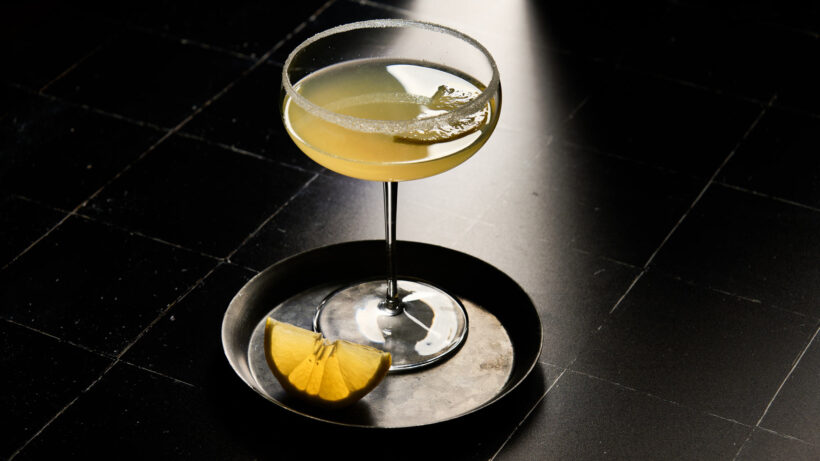
Frequently Asked Questions
In my experience, there is nothing that tastes more like lemon than actual lemon. With the lemon juice, lemon oil syrup, and expressed lemon peel, this Lemon Drop Martini has plenty of lemon to carry an unflavored vodka.
That being said, if you also want to use a citron vodka of some kind. Don’t let little-ole-me stop you! Make the martini both ways and see what you like. I’d be interested to hear back on your assessments.
There are several difference between oleos and simple syrups:
1. The cooking method is different. Oleos use maceration (soaking ingredients in sugar to extract flavors over 6-24hours, without the use of heat) to create the syrup. Simple syrups are cooked on the stovetop and typically take 5-30 minutes to make.
2. The texture between the two is also slightly different. Lemon oleo, because it isn’t heated has a thinner texture. In most cases, the sugar also doesn’t completely dissolve, so in some applications it can also have a bit of crunchiness. With cocktails, the agitation of shaking and then straining gets rid of that, so undissolved sugar crystals aren’t a problem here. A simple syrup, is thicker and smoother than an oleo.
3. Oleo, much like other maceration applications, has a brighter, lighter flavor than its cooked syrup counterpart. Simple syrups have sweeter stewed flavor that is perfect for cocktails where you don’t want the syrup to overwhelm or add a large component to the overall drink.
You can sugar the rim of the martini glass with superfine sugar, granulated sugar, and/or sanding sugar. Superfine sugar has the smallest granularity, then regular sugar, with the largest granule being sanding sugar. The size of the granules will affect the martini both visually and texturally. My favorite sugar is superfine, as it has a more uniform texture and it’s granule size melts better than others. Sanding sugar’s oversized granules are what you would typically see in chain restaurants and bars.
It could also be fun to make flavored sugar by rubbing lemon zest into the sugar before rolling the glass’s rim into the mixture. You can also incorporate herbs like rosemary or thyme and flowers like lavender.
The sky is the limit.
A few options include a fresh lemon slice, a candied lemon slice, a dehydrated citrus wheel, or a lemon peel. To me, these garnishes are optional if you already have the sugared rim.
If you want to be a little extra, my favorite way to make oleo-saccharum is actually with a vacuum sealer. To me, the final product is sweeter and brighter (more infused) than what I could produce with maceration in a bowl. This method is also twice as fast (done in 4-12 hours). Of note: this will not produce more oleo-saccharum. The only way to do that is to use more ingredients. Sorry!
To do the vacuum sealer method (popularized by Jeffrey Morgenthaler) follow the same instructions as above, but after the 10 minute mix and rest, add all of the ingredients to a vacuum seal bag and use your sealer as instructed. You can also store this in the fridge, as is, until you are ready to use it. There is no air to oxidize with the citrus and turn it brown. It will stay fresh as long as the bag is sealed.

